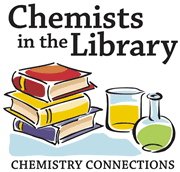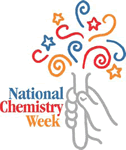Print and Video
This is a collection of print and video resources. A separate collection of Online Resources is also available.
Key: E=Elementary (K–5), I=Intermediate (6–8),
HS=High School (9–12), C=College, G=General Public
NSTA Recommends: Titles from the
National Science Teachers Association website.
-
 Elements and the Periodic Table: What Things Are Made Of.
Greensboro, NC: Carson-Dellosa Publishing Company, Inc.
(E, I)
Elements and the Periodic Table: What Things Are Made Of.
Greensboro, NC: Carson-Dellosa Publishing Company, Inc.
(E, I)
NSTA Recommends - Can be used as a stand alone or to supplement a unit on the periodic table. Includes teacher’s guide and incorporates games and reproducible student pages with activities and assessments. Aligns with National Science Education Standards.
-
Periodic Table: Discovery Science.
Austin, TX: Prufrock Press.
(E, I)
NSTA Recommends - Presents the periodic table as a puzzle to solve. Includes lesson plans, worksheets and answer keys. Aligns with National Science Education Standards.
- Fizz, Bubble & Flash. Charlotte, VT: Williamson Publishing. (E, I, G)
- Gives instructions for a variety of experiments that examine the characteristics of some of the common elements around us.
- The Elements (series).
Tarrytown, NY: Marshall Cavendish Corporation.
(E, I)
NSTA Recommends - This series provides attractive books with pictures, charts and diagrams introducing individual elements. Includes descriptions of atomic structure, properties, uses, history and health implications of elements.
- The Periodic Table: Mapping the Elements (Exploring Science: Physical Science Series). Minneapolis, Minn.: Compass Point Books. (E, I)
- Discusses Mendeleev’s discovery known as the periodic table and shows how it has been instrumental to advancements in the field of chemistry.
- The Periodic Table: Elements with Style! New York: Kingfisher. (E, I)
- Uses original graphics and spotlights 64 of the elements using “personalities” for the elements. Quirky and idiosyncratic, this is an appealing choice for introducing the periodic table.
-
Exploring Chemical Elements and their Compounds.
New York, NY: Mcgraw-Hill Inc.
(I, HS)
NSTA Recommends - Easy-to-read, compact and fairly comprehensive treatment for each element in the periodic table. Examples of reactions for isolation and purification of the elements and explanations of technologies used for isolation or application of the elements are also given.
-
The Properties of Elements and Compounds (Sci-Hi: Physical Science).
Chicago, IL: Raintree Publishers.
(I, HS)
NSTA Recommends - Magazine format book with large titles, clear introductions, catchy graphics, and informative sidebars. Includes an account of Dmitri Mendeleyev, hands-on activities, and a simplified periodic table of the known elements.
- The Elements (series). New York: Benchmark Books. (E, I)
- Series of books covering a single element (e.g., Calcium) or related group of elements (e.g., Noble gases). Each volume includes section on element’s atomic structure, occurrence in nature, uses and practical applications. Sidebars give facts and trivia about the elements, scientists, and related historical events.
-
History and Use of Our Earth’s Chemical Elements: A Reference Guide.
Westport, CT: Greenwood Press.
(HS, C)
NSTA Recommends - Extensive compilation of information on the chemical elements. Includes physical, chemical and historical data, technological applications, abundances, and hazards. Extensive glossary and a discovery timeline are nice added features.
-
Elements: What You Really Want to Know.
Minneapolis, MN: Lerner Publications Co.
(E, I)
NSTA Recommends - An award winning book that provides historical accounts of how scientists studied the elements from early Greeks to present day. Includes reading lists, suggested websites, glossary, and index.
- The Periodic Table.
 Chicago, IL: Clearvue & SVE, Inc.
(HS)
Chicago, IL: Clearvue & SVE, Inc.
(HS)
NSTA Recommends - Features well-made history of the periodic table, including contributions of scientists like Brand, Newland, Meyer, and Mendeleyev. Includes demonstrations that can not be done in the classroom (e.g., removal of oxygen from atmospheric mixture). Also includes objectives, vocabulary, reproducible student pages, and glossary.
- Physical Science in Action: Elements, Compounds and Mixtures.
 Wynnewood, PA: Schlessinger Media.
(E, I)
Wynnewood, PA: Schlessinger Media.
(E, I)
NSTA Recommends - Video that uses real-life illustrations and emphasizes the concept that all substances are made of limited number of basic elements. Explains Mendeleev’s role in designing the periodic table. Also includes basic introduction to chemical bonding.
-
 Atomic structure & the periodic table and The history of the periodic table.
Wynnewood, PA : Schlessinger Media.
(I, HS)
Atomic structure & the periodic table and The history of the periodic table.
Wynnewood, PA : Schlessinger Media.
(I, HS) - Multimedia Elements Files.
 Florence, KY: Discovery Channel School.
(E, I)
Florence, KY: Discovery Channel School.
(E, I)
NSTA Recommends - Package of CD-ROM, teacher resource book, student booklets, and Chemistry HotLinks to supplement existing curriculum units in the periodic table and the elements.
-
Oxford Guide to the Elements.
New York, NY: Oxford University Press.
(HS)
NSTA Recommends - Good reference book for high school science classroom.
-
 Mastering the Periodic Table: 50 Activities on the Elements.
Portland, ME: Walch Publishing.
(I, HS)
Mastering the Periodic Table: 50 Activities on the Elements.
Portland, ME: Walch Publishing.
(I, HS)
NSTA Recommends - This book provides 50 activities related to the periodic table of the elements. Good resource for teachers, especially as a supplement for instruction.
- Dmitri Mendeleyev and the Periodic Table. (Uncharted, Unexplored, and Unexplained: Scientific Advancements of the 19th Century) Hockessin, Del.: Mitchell Lane Publishers. (E, I)
- A biography of the scientist who developed the periodic table, this book is well illustrated with drawings and photographs. Sidebars offer background on Mendeleyev’s involvement in Russian politics of the time.

